Sometimes when I see something odd in real-time engine data during a flight, I can almost hear the voice of Vic Perrin saying “There is nothing wrong with your TV set. We are controlling transmission. We will control the numbers you see. You are about to experience the awe and mystery which reaches from the inner mind to – The Outer Limits.” If you too are a fan of the show – and yes I have the four double sided-DVD collection – you know that some of the plots didn’t require too much willing suspension of disbelief, but many did.
Still, nothing on The Outer Limits could hurt your TV, or cost you a bunch of money, or maybe even threaten your life. Engine data might be telling you about something that could – or it could be a harmless distraction. Let’s see what we can learn from this month’s collection of data.
Let’s warm up with data from a Cirrus SR 22 with a Continental IO-550 and data from an Avidyne with a 6 sec sample rate. My standard layout of EGTs on top, then CHTs, FF and Oil Temp.
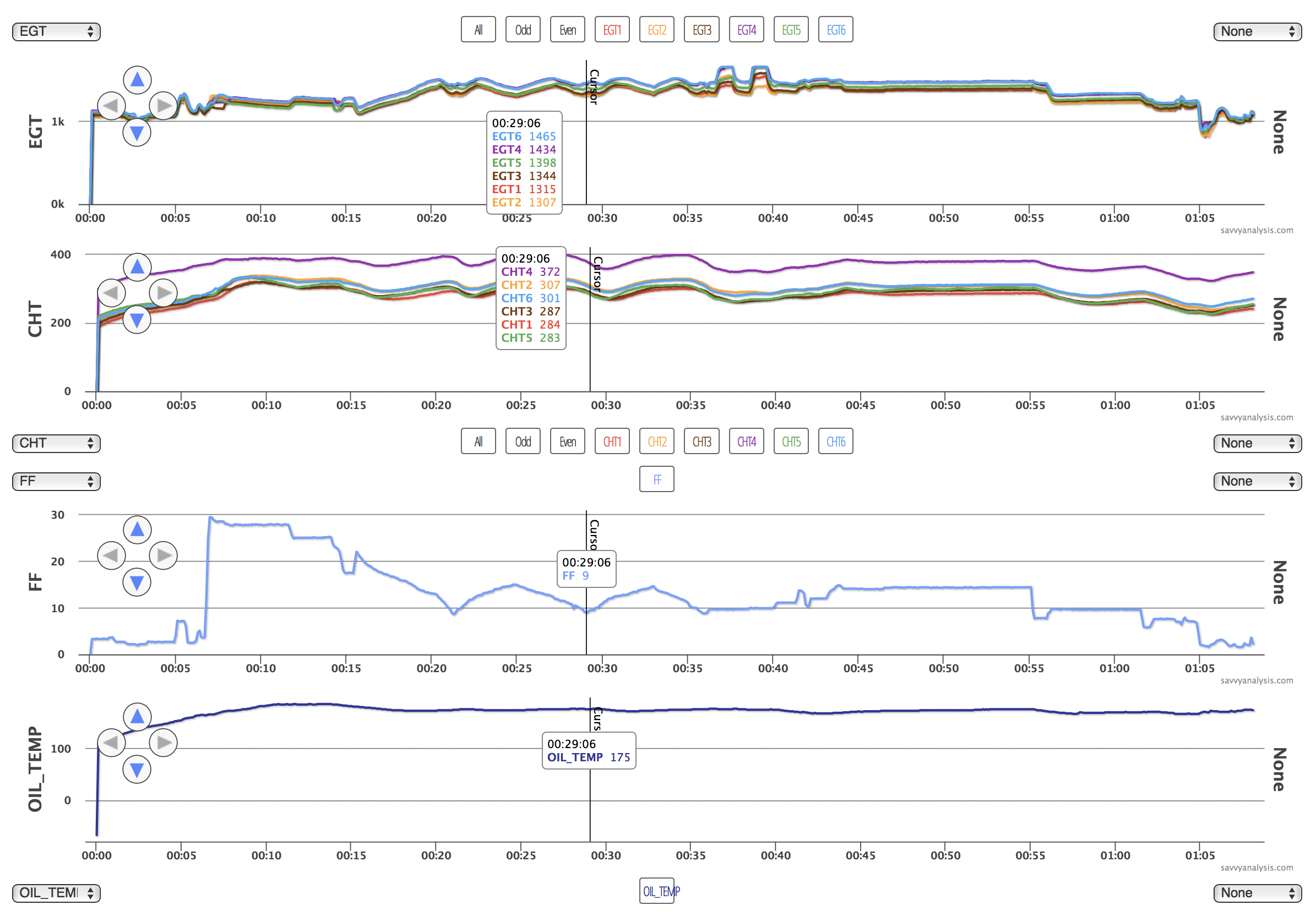
The issue is CHT 4. It had been high on recent flights, so this owner decided to send us our test profile – mixture sweeps and a LOP mag check. In this case we could probably have felt confident about the diagnosis without the test profile data, but it’s always helpful to have it. The mixture sweeps show that at the leanest point – 9 GPH – CHT 4 is still high and EGT 4 has dropped from its position as hottest to second-hottest. One thing that could cause CHT 4 to be high is an injector clog, but with a clog we should see both EGT and CHT drop a lot as the cylinder struggles to make power on less available fuel – we’re not seeing that.
Poor cooling or friction from a piston ring are other possible causes, but notice that the first sample of CHT 4 starts high and the purple trace stays about that high throughout the flight. When a group of people sing “Happy Birthday”, sometimes they form a consensus on the key before anyone sings, and sometimes a consensus is formed after a few notes. And sometimes there is no consensus and one or more people stubbornly sing in their own key until the end of the song. This is that. It was a faulty probe, determined to track high, and once it was replaced the data looked normal again.
Next up is data from a Maule M7 Rocket with a Lycoming O-540 and data from an EI CGR-30P with a 1 sec sample rate. EGT, CHT, FF then OAT in Cº and Carb Temp in Fº.
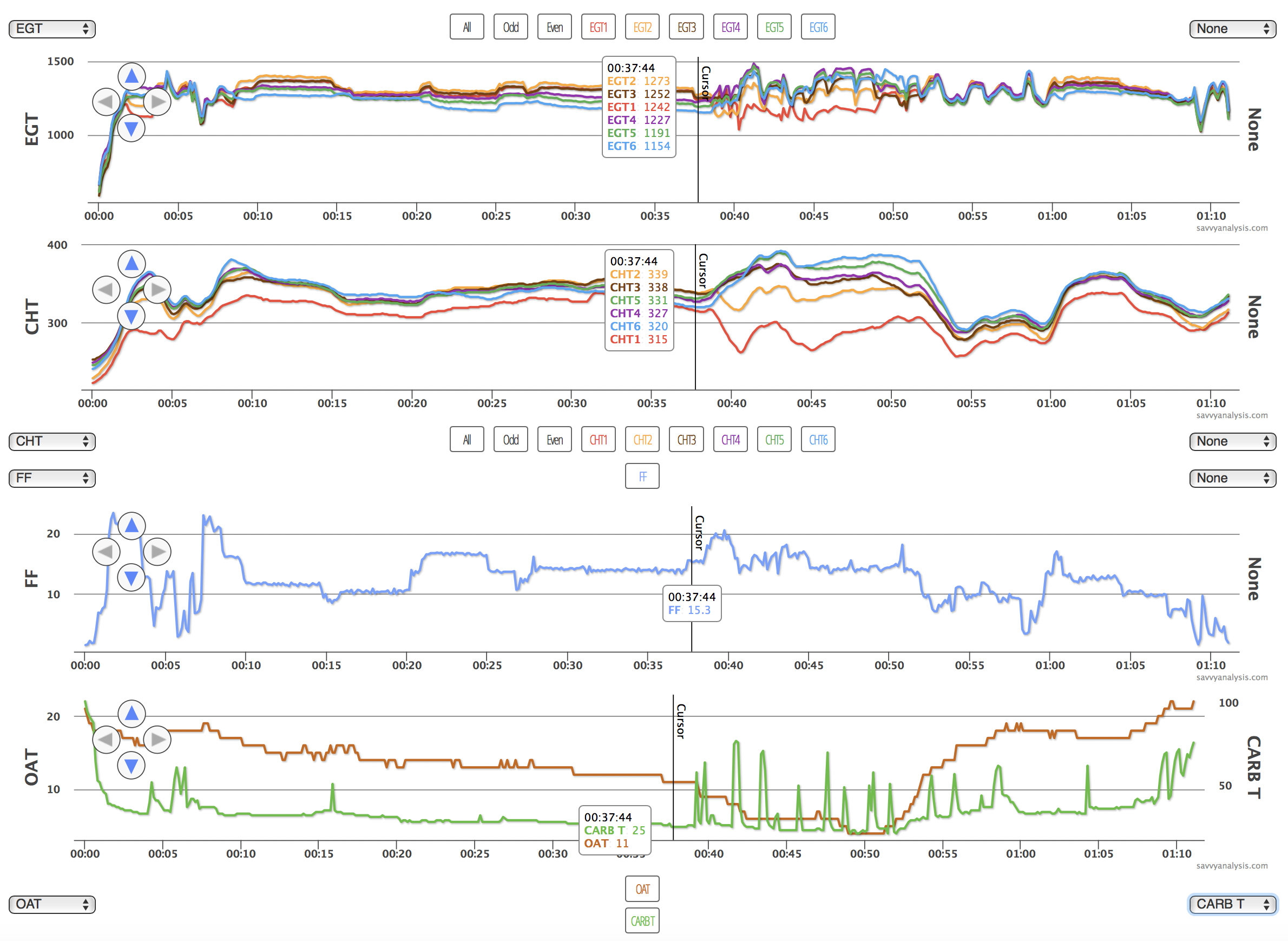
The cursor is at a common time but the vertical lines jog when a second trace is overlaid. Before the cursor it was a smooth flight with no problems. CHT 1 tracks low because it uses a gasket probe. After the cursor, you can see that OAT hasn’t yet dropped to freezing, but Carb Temp is jumping between the mid 20s and much warmer temps from the mid 50s to the mid 70s – in Fº.
It looks like carb ice caused the engine to run rough, so the pilot applied carb heat, which can also cause the engine to run rough, and between judicious application of carb heat and descending to a warmer altitude, the engine got back to normal.
Next up is data from a Piper Aztec with Lycoming TIO-540 engines and data from a JPI Twin 960 with a 1 sec sample rate. The issue is with cyl 4 on the L engine so here are three recent flights.
Flight 1
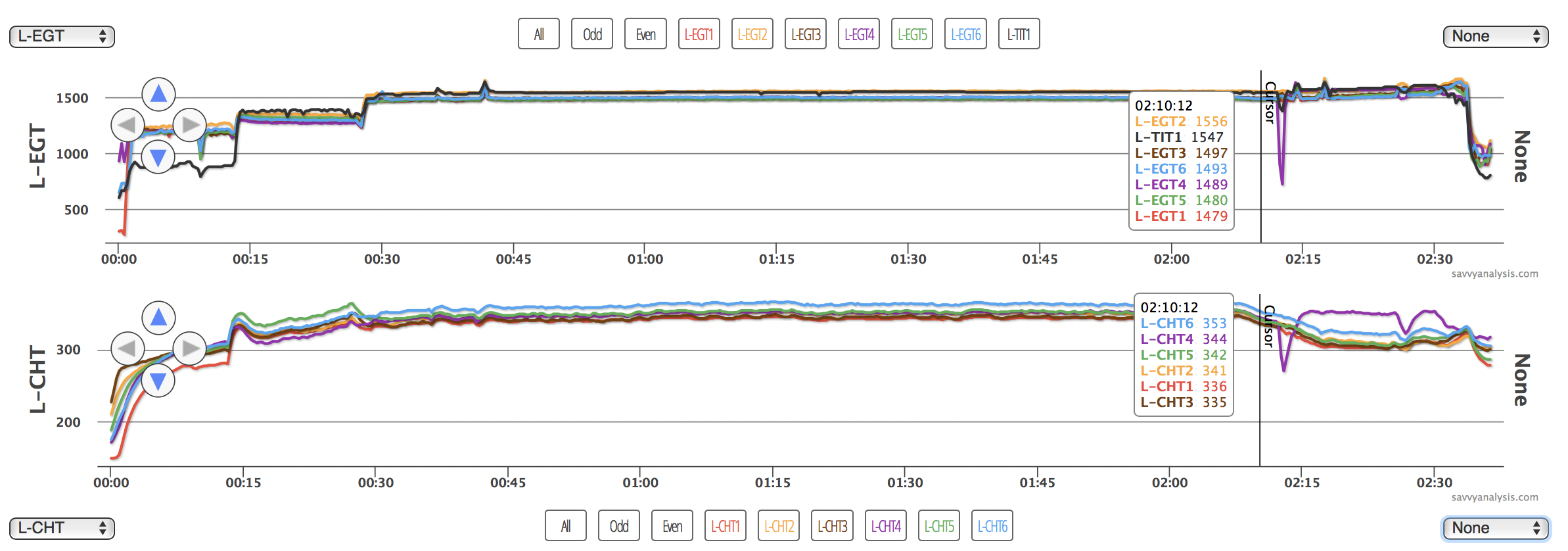
Flight 2
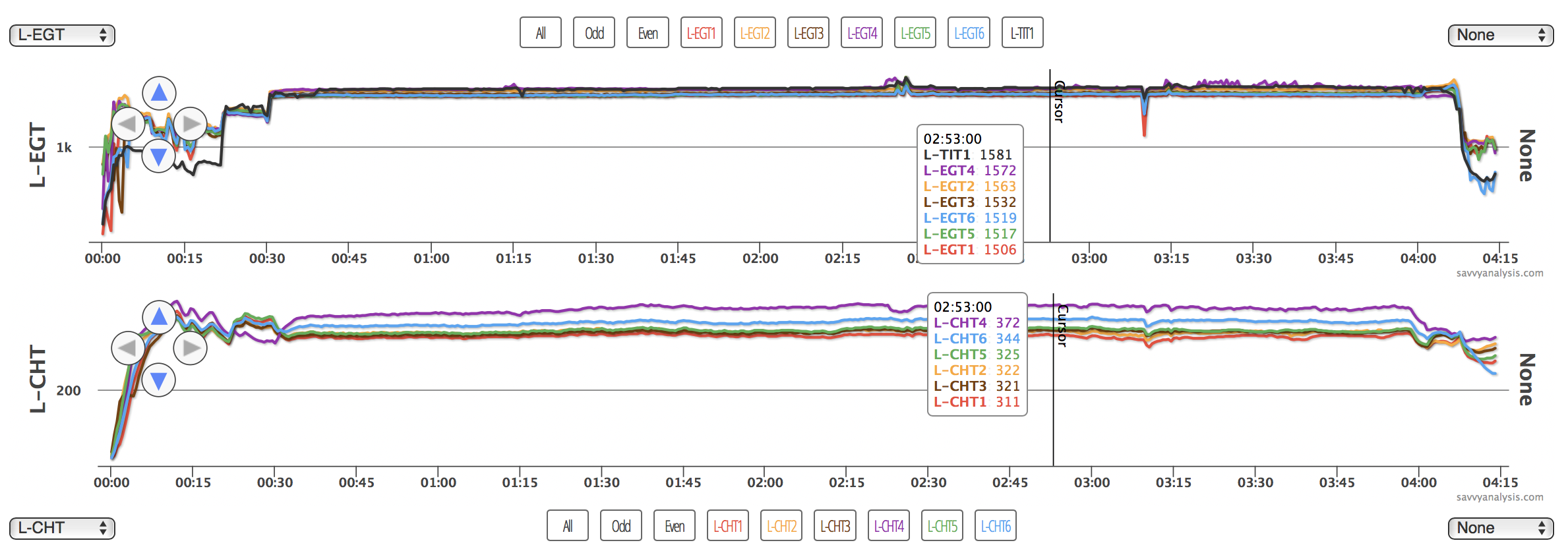
Flight 3

On flight 1 at the :02:12:00 mark. EGT 4 and CHT 4 drop dramatically, then CHT 4 rises and stays about 30º hotter than the others. It happens about 1500 feet into the descent out of 12000 MSL. No big change in FF, RPM or MAP, so it doesn’t look like a power command initiated the failure. Oil pressure rises a tiny bit – not enough to get your attention.
On flight 2 EGT 4 is mostly normal – a little high and jumpy near the end. CHT 4 is high except in climb. Same scenario on flight 3. CHT 4 high except in climb with the extra fuel for cooling. EGT 4 high in cruise until 1 hr 16 mins. That’s when they notice a trail of something coming from the L engine. They thought it might be smoke, then realized it was oil and the pilot decides to shut it down.
We knew when the data arrived that inspection had revealed a bent pushrod on L cyl 4. We also knew that once the pushrod was removed the exhaust valve looked normal and moved freely. The question was could we determine what happened and why. Here’s our theory.
It seems like the exhaust valve stuck on flight 1 in the descent, causing the immediate drop, then was ok again, except the pushrod got bent in the process, and started leaking oil. With a bent pushrod the rocker arm wasn’t in sync. Poor lubrication caused the high CHT on the two subsequent flights, and the bent pushrod keep the valve from working 100%, causing the erratic EGT. We’ve seen erratic patterns like this with broken valve springs, but in this case the spring was ok. It makes sense that when the pushrod was removed, the cold valve looked ok and moved ok, but at engine temp with the pressure of the bent rod it had been a different story.
Oil analysis is outside the scope of SavvyAnalysis Pro. We don’t perform it and we don’t offer second opinions about the work of those who do. But if we see something in the engine data, and a recent oil analysis report shows an anomaly, it makes sense to try and connect those dots. That’s what happened with this data from a Piper Pathfinder 235 with a Lycoming O-540 and data from a JPI 700 with a 2 sec sample rate.
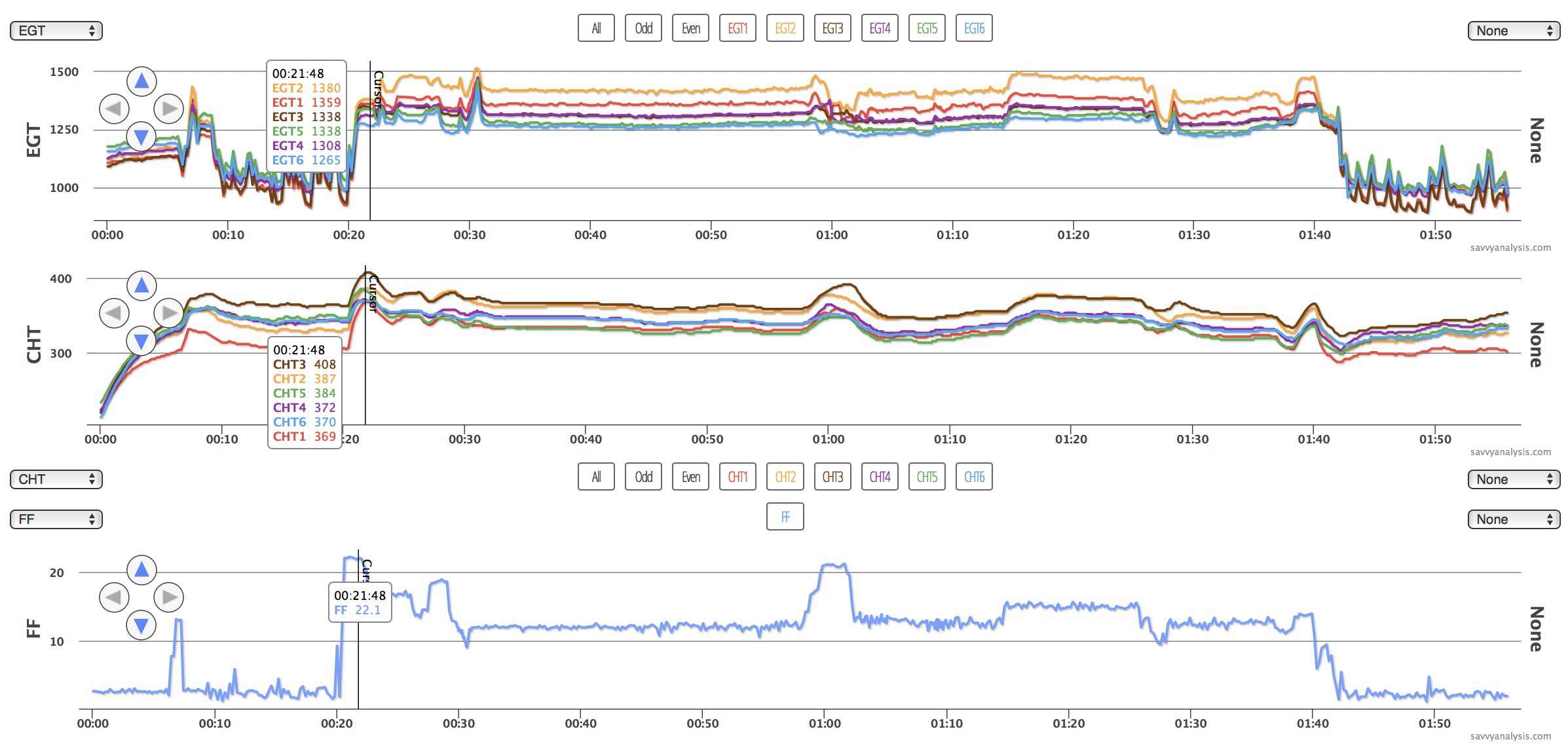
The oil report had shown a spike in chromium. We know that chromium can come from piston rings and cylinder walls, so when we see a high CHT but the corresponding EGT isn’t high, and oil consumption has gone up recently – and maybe the bottom plug on that cylinder has oil-fouled recently – that’s enough evidence to support a borescope of the cylinder. In this case they discovered the rings were intact – not broken – but the cross-hatching was mostly gone, and there was a lot of oil in the cylinder.
We’ll finish this month with a Cirrus SR22 with a Continental IO-550 and data from an Avidyne with a 6 sec sample rate. EGTs on top, CHTs below, then RPMs and MAP, with Oil Temp and Oil Pressure below that.
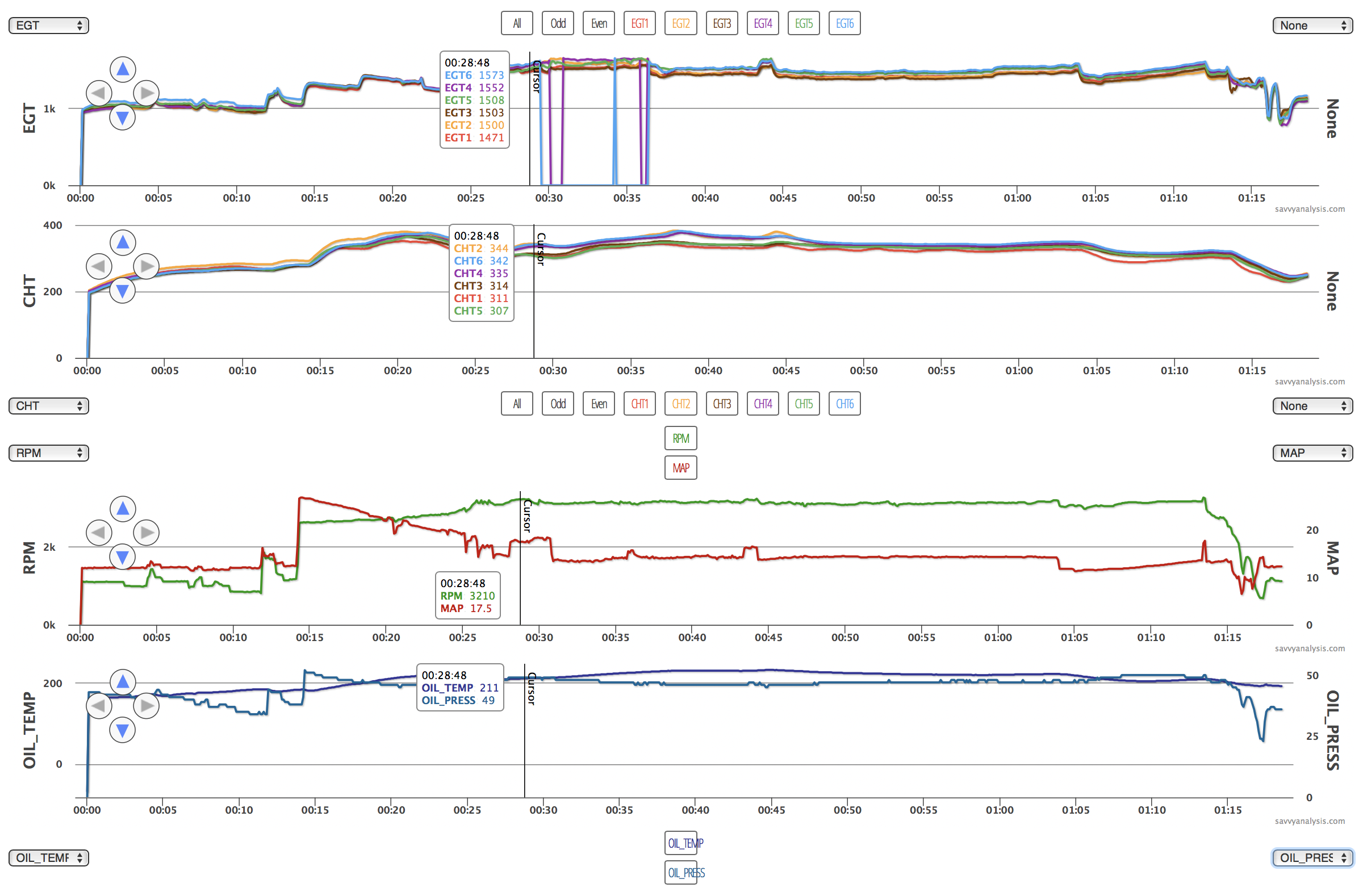
All’s fine during taxi-out. No problems at takeoff. MAP is 26.7″ – all you can get at this altitude – and RPMs are 2630. That’s lower than our recommendation of 2680 (vs redline of 2700) to keep the Avidyne’s alarms from triggering. But RPMs soon begin rising, right through redline and into the 3100-3200 range. The cursor is parked on the peak of 3210. MAP is already dropping in the climb, but the pilot pulls it back further in an attempt to stop the runaway RPM – it doesn’t help.
You’d think that an engine running 500 RPMs over redline would cause oil pressure and maybe oil temp to skyrocket, or drop or oscillate – but we see very little effect on either. CHTs don’t go through the roof, either. The prop had been overhauled about 20 flight hours earlier. When the flight ends, the inspections begin and reveal…
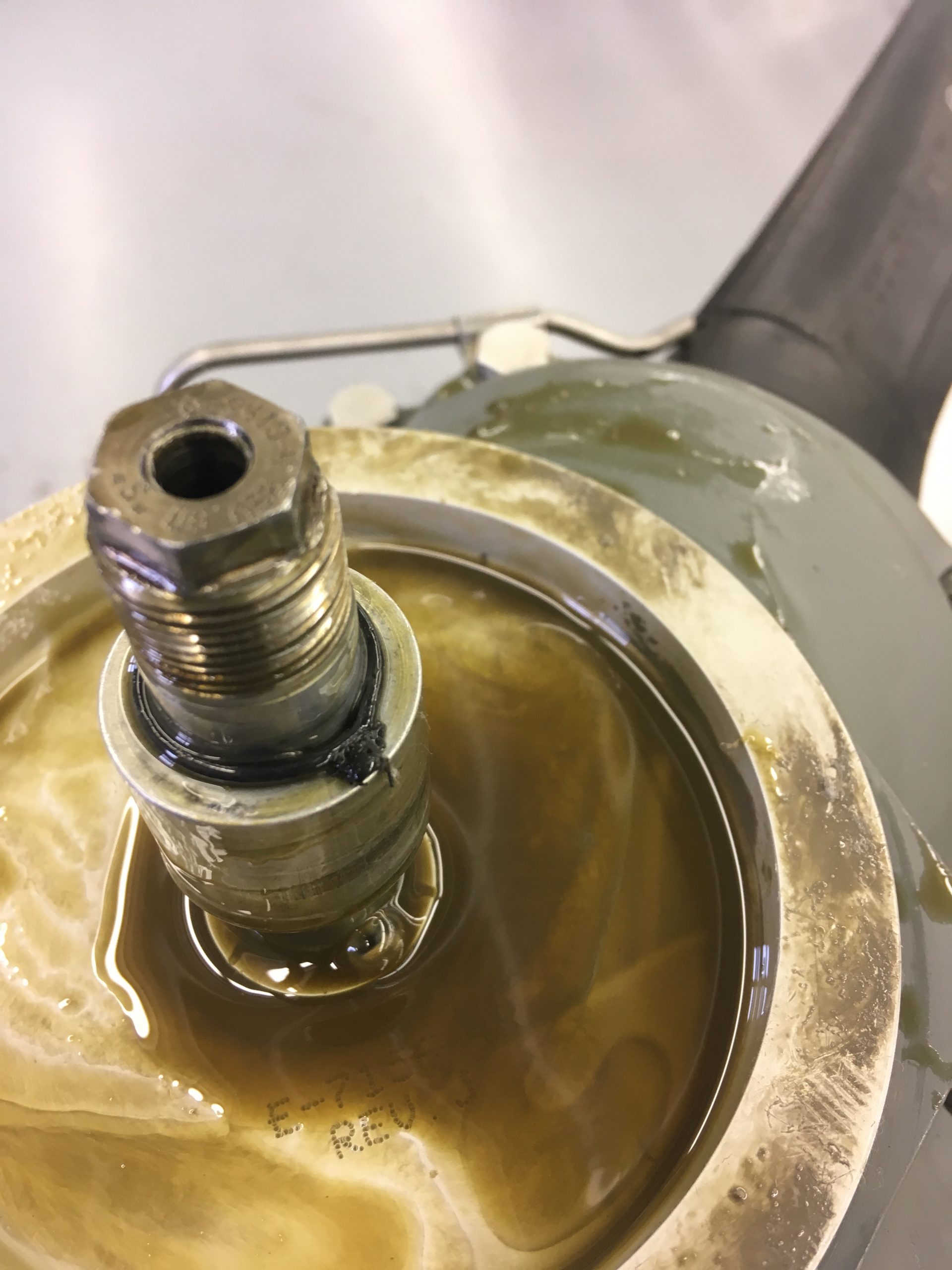
A “pinched” O-ring during assembly of the propeller at overhaul caused a slow internal leak inside the propeller, which eventually locked the prop into the low-pitch position.
See you next month.
btw, my favorite Outer Limits episode – The Zanti Misfits.